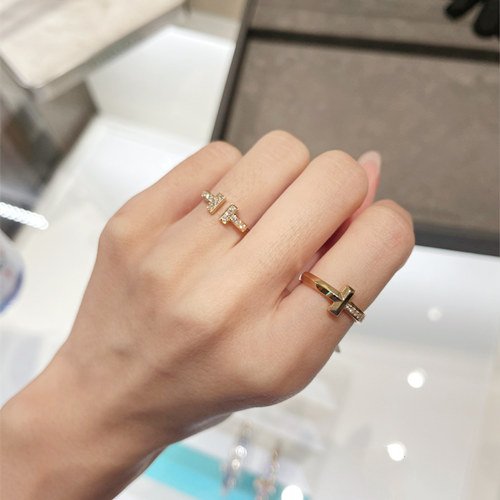Smart Rings And Fidelity: Would You Wear One?

Table of Contents
The Allure of Smart Rings for Relationship Monitoring
The appeal of using smart ring technology for relationship monitoring stems from the promise of increased transparency and, consequently, trust. However, this promise is often fraught with peril.
Tracking Features and Their Implications
Smart rings offer a range of features that could be interpreted as relationship monitoring tools:
- Location Tracking: Knowing a partner's location at all times can provide a sense of security for some, but it can also breed suspicion and control.
- Activity Monitoring: Tracking sleep patterns, steps taken, and even heart rate variability could be seen as a way to monitor a partner's overall well-being, but it could also be used to scrutinize their activities and create unnecessary anxiety.
- Heart Rate Variability Analysis: Changes in heart rate variability can sometimes indicate stress. While this could theoretically alert a partner to potential problems, it's far from a foolproof indicator of infidelity and could lead to misinterpretations and conflict.
- Proximity Sensors: Some smart rings can detect proximity to other devices or individuals. This information, while seemingly innocuous, could fuel unfounded suspicions.
The potential for misunderstandings and privacy violations is substantial. What might seem like a benign check-in could easily be perceived as a lack of trust or an invasion of privacy, damaging the relationship in the process.
The Promise of Increased Transparency and Trust (or the Illusion Thereof)
Proponents argue that smart rings promote trust by increasing transparency. Reduced suspicions and improved communication are frequently cited benefits. Early detection of infidelity is another frequently mentioned, albeit unrealistic, advantage. However, the reality is often far more nuanced.
- Reduced Suspicions (potentially): Openly sharing location data might alleviate some anxieties, but this depends entirely on the context and the individuals involved.
- Improved Communication (potentially): Data sharing could spark conversations, but these conversations need to be approached with sensitivity and understanding to avoid escalating conflicts.
- Potential for Early Detection of Infidelity (highly unlikely): Relying on smart ring data to detect infidelity is unreliable and can lead to false accusations, severely damaging trust.
The danger of over-reliance on technology is significant. Smart rings cannot replace healthy communication, and misinterpreting data can lead to unnecessary conflict and erode trust further.
Privacy Concerns and Ethical Dilemmas
The use of smart rings for relationship monitoring raises serious ethical and privacy concerns.
Data Security and Potential for Hacking
Smart rings collect and store sensitive personal data, making them vulnerable to hacking and misuse.
- Vulnerability of Personal Data: Location data, activity levels, and even heart rate information are highly personal and could be misused if the device is compromised.
- Potential for Misuse of Location Data: Hackers could gain access to sensitive location data, potentially leading to stalking or other harmful activities.
- Lack of Regulation: The wearable technology sector is still relatively unregulated, meaning data protection measures may not be as robust as they should be.
Strong encryption and robust data protection measures are crucial, but even with these safeguards, the risk remains.
Consent and the Erosion of Trust
The use of smart rings for relationship monitoring without explicit, informed, and ongoing consent is ethically problematic.
- Importance of Informed Consent: Both partners must understand exactly what data is being collected and how it will be used before agreeing to use a smart ring for relationship monitoring. This consent must be freely given and not coerced.
- Potential for Coercion or Manipulation: One partner might feel pressured to wear a smart ring, even if they are uncomfortable with the implications for their privacy.
- Ethical Implications: Surveillance without consent is a violation of privacy and can severely damage trust.
Open and honest communication is paramount. Transparency and mutual respect should form the cornerstone of any relationship, and the use of technology should never undermine these fundamental principles.
Smart Rings vs. Traditional Relationship Dynamics
Technology should complement, not replace, the foundational elements of a healthy relationship.
The Role of Communication and Trust in Healthy Relationships
Healthy relationships thrive on open communication, mutual respect, and trust.
- Importance of Open Communication: Talking openly about concerns and anxieties is crucial for resolving issues and building a strong foundation.
- Building Trust Through Vulnerability and Honesty: Trust is earned through consistent honesty and openness, not through technological surveillance.
- Alternative Strategies for Resolving Relationship Issues: Couples therapy, communication workshops, and individual counseling are all far more effective and ethical approaches to resolving relationship issues than relying on technology.
Relying on technology to monitor a partner undermines the very principles upon which healthy relationships are built.
Potential for Increased Anxiety and Paranoia
Constant monitoring can create a climate of anxiety and paranoia.
- Potential for Increased Anxiety and Insecurity: The constant awareness of being monitored can lead to feelings of insecurity and restrict personal freedom.
- Risk of Escalating Conflict: Misinterpretations of data can fuel conflict and escalate tensions, rather than resolving them.
The potential negative psychological impacts of using smart rings for relationship monitoring far outweigh any perceived benefits.
Conclusion
Smart rings and their potential applications in relationship monitoring present a complex ethical and practical dilemma. While the technology offers a veneer of increased transparency, the potential for privacy violations, misinterpretation of data, and erosion of trust is significant. Healthy relationships are built on open communication, mutual respect, and trust, not on the constant surveillance of technology. Before considering a smart ring to address relationship concerns, consider prioritizing open and honest communication as a more effective and ethical approach. Instead of relying on smart ring technology for fidelity, focus on strengthening the foundation of your relationship through healthy communication and mutual respect. Ultimately, the question of whether you would wear a smart ring for fidelity comes down to your personal values and priorities.

Featured Posts
-
 Play Station Voucher Glitch Resolved Sony Provides Free Credit
May 02, 2025
Play Station Voucher Glitch Resolved Sony Provides Free Credit
May 02, 2025 -
 Fans Inappropriate Kiss On Christina Aguilera Sparks Outrage
May 02, 2025
Fans Inappropriate Kiss On Christina Aguilera Sparks Outrage
May 02, 2025 -
 Lotto Plus 1 And 2 Results Check The Latest Winning Numbers
May 02, 2025
Lotto Plus 1 And 2 Results Check The Latest Winning Numbers
May 02, 2025 -
 Frances Rugby Dominance A Six Nations 2025 Preview
May 02, 2025
Frances Rugby Dominance A Six Nations 2025 Preview
May 02, 2025 -
 Tribute To Dallas And Carrie Star Amy Irvings Moving Words
May 02, 2025
Tribute To Dallas And Carrie Star Amy Irvings Moving Words
May 02, 2025
Latest Posts
-
 Analyzing Ap Decision Notes Implications For The Minnesota House Race
May 02, 2025
Analyzing Ap Decision Notes Implications For The Minnesota House Race
May 02, 2025 -
 Ap Decision Notes Your Guide To The Minnesota Special House Election
May 02, 2025
Ap Decision Notes Your Guide To The Minnesota Special House Election
May 02, 2025 -
 South Carolina Voters Express Confidence In Election Processes 93 Approval
May 02, 2025
South Carolina Voters Express Confidence In Election Processes 93 Approval
May 02, 2025 -
 High Public Trust In South Carolina Elections A Recent Survey
May 02, 2025
High Public Trust In South Carolina Elections A Recent Survey
May 02, 2025 -
 Ap Decision Notes And The Minnesota Special State House Election A Comprehensive Overview
May 02, 2025
Ap Decision Notes And The Minnesota Special State House Election A Comprehensive Overview
May 02, 2025
